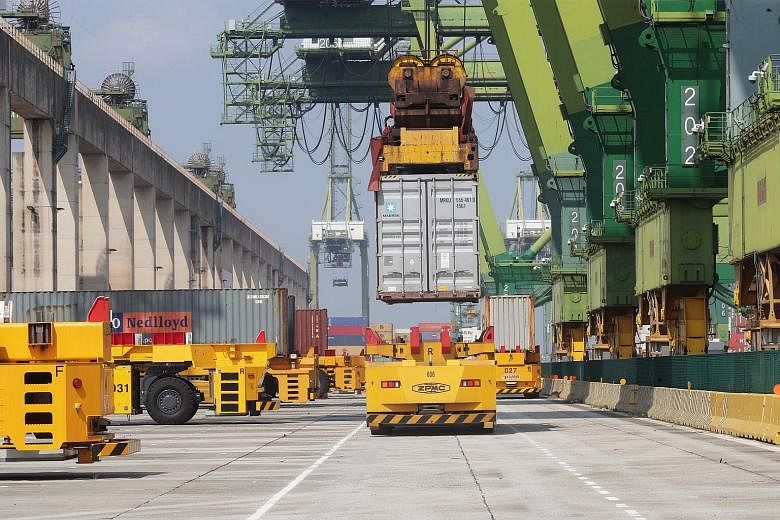Singapore is to set up the world's first commercial 3D printing production facility sited at a port to make spare parts for port equipment.
The facility, which will be built at PSA's Pasir Panjang Terminal, will feature state-of-the-art printers and use a maritime digital cloud supported by blockchain technology for increased security of file transfers.
An agreement to set up the facility was among several deals signed yesterday at an event to promote the development and use of 3D printing, also called additive manufacturing.
The Government is committed to growing 3D printing in Singapore, a technology that has already disrupted how industries function, said Dr Lam Pin Min, Senior Minister of State for Transport and Health, at the National Additive Manufacturing Innovation Cluster (Namic) Global Additive Manufacturing Summit at Singapore Expo.
Noting the use of 3D printing in the maritime sector, he said: "With additive manufacturing, customised ship parts such as propellers, previously produced by original manufacturers at specific locations, can now be printed whenever and wherever needed, at ports of call or even on board ships."
He added that the replacement of parts could even just be a case of adding on layers to worn-out parts. This can prolong asset lifespans, reduce inventory and lower the cost of maintenance.
Dr Lam noted that 3D printing is disrupting traditional methods of mass assembly and distribution, as it allows for on-site and on-demand production.
Customised products in small batches can also be made at lower cost, as additive manufacturing can produce highly complex objects with intricate details, often with a single 3D printer, he added.
Healthcare is an area that has seen the greater use of 3D printing. It is used, for instance, to print synthetic skin tissue for ethical drug and cosmetics testing.
The maritime sector, too, has increasingly adopted 3D printing.
At the summit yesterday, the Maritime and Port Authority of Singapore (MPA) signed an agreement with Namic, PSA and manufacturing firm 3D Metalforge to establish the 3D maritime printing facility.
MPA also launched a joint industry innovation programme for additive manufacturing in maritime parts, with Namic and the Singapore Shipping Association.
MPA chief executive Andrew Tan said: "As a leading maritime hub, Singapore firmly believes that the maritime industry should embrace new technologies such as additive manufacturing. The digitalisation of the maritime sector in all its aspects is not a matter of how but when."
Apart from maritime and healthcare, 3D printing can also be used for lifestyle purposes.
Namic yesterday signed a collaboration with Wiivv, a company based in the United States and Canada that produces 3D printed insoles. With 3D printing, footwear can be customised to provide better support for individuals.
Namic also signed an agreement yesterday to join global standards leader ASTM International's Additive Manufacturing Centre of Excellence to advance standards and support research and development in commercialising such technologies.


